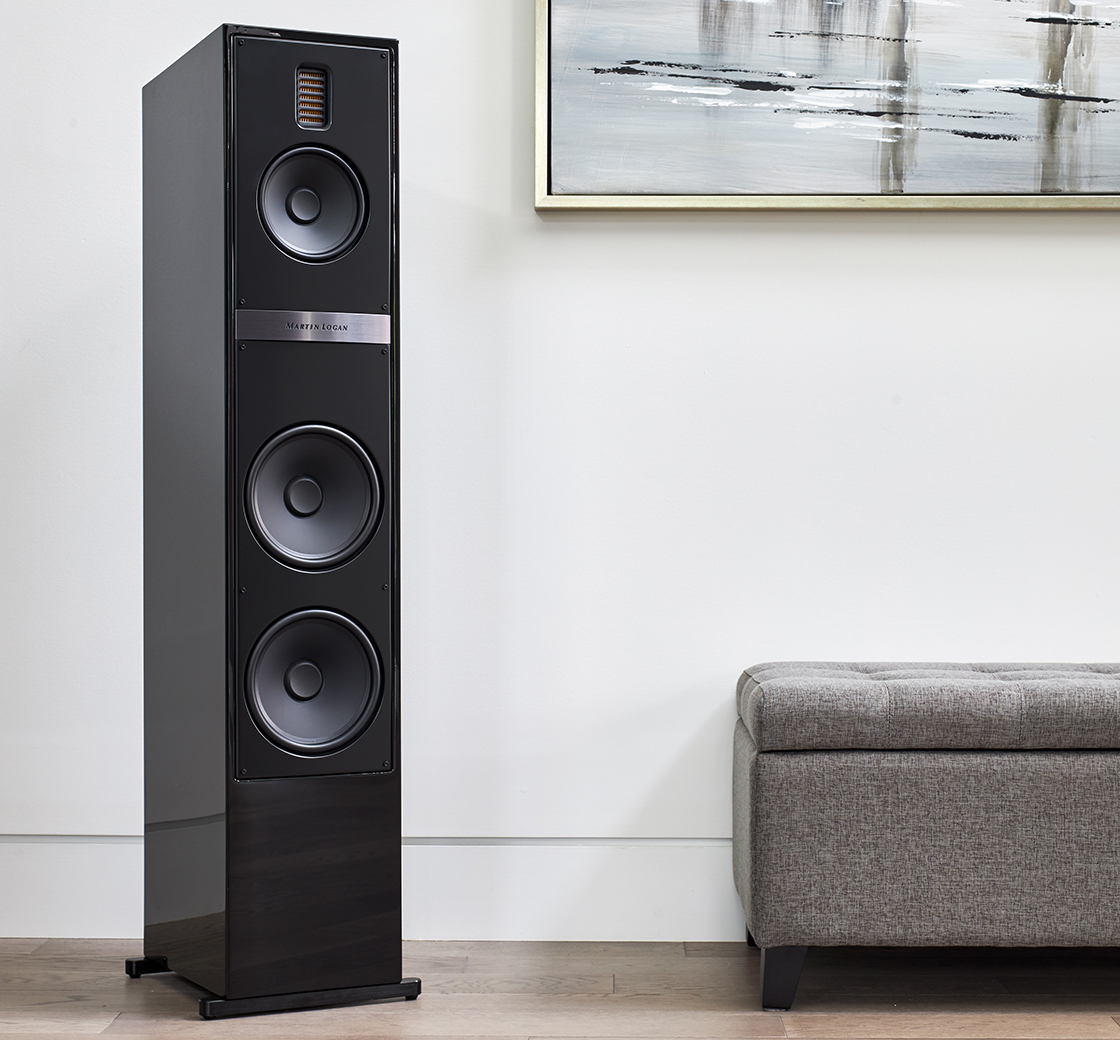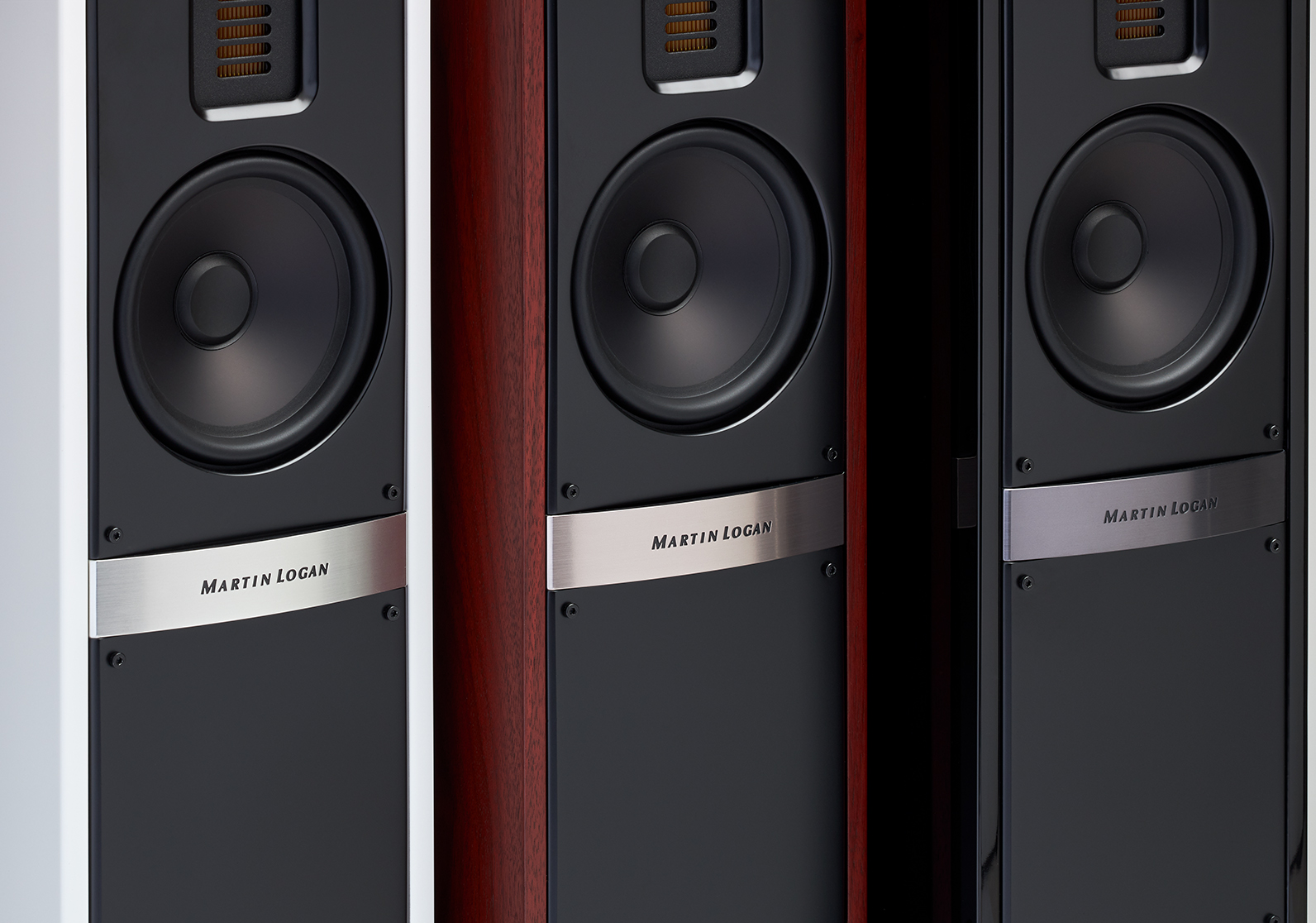Sound+Image Verdict
Standing tall at the top of MartinLogan’s ‘Motion i’ range, the 60XTi floorstanders both look and sound glorious, with their highlight being scintillating soundstaging from the company’s Folded Motion thin-film tweeters.
Pros
- +
Thrilling highs and mids
- +
Tight punchy bass delivery
- +
Slim, unimposing front
Cons
- -
Tweeters quite high in cabinet
- -
Need a good-size room
Why you can trust What Hi-Fi?

This review originally appeared in Sound+Image magazine, one of What Hi-Fi?’s Australian sister publications. Click here for more information on Sound+Image, including details on how you can subscribe.
One of this writer’s earliest hi-fi revelations came courtesy of MartinLogan. Back at the advent of the 1990s, a tour was organised for this then-UK junior reviewer to gain what was, in retrospect, a rare and privileged insight into the home hi-fi systems of the most esteemed reviewers in the country at that time.
Three memories from this tour were etched deep. The first of these was the inconceivable size of the LP and CD collection of Jimmy Hughes. Second was the sound of Led Zeppelin’s Moby Dick played through Malcolm Steward’s Linn/Naim system (the speaker model is forgotten, but the song very much remains).
And third was being sat in front of a pair of MartinLogan electrostatic speakers at the home of Alvin Gold, to be transported by the extraordinary detail, soundstaging and sheer realism of the orchestral recordings he favoured. MartinLogan has held a little place in the heart ever since.

Build
As you can see from the picture here, these floorstanding speakers are not, however, one of MartinLogan’s classic electrostatic panel designs. The 60XTi model is part of the ‘Motion i’ series released last year as a reimagining of the original Motion series released around a decade ago. These use more conventional speaker cabinets and drivers, although with a very particular tweeter technology, to which we’ll come shortly.
For many prospective purchasers, the more conventional cabinets – slim-fronted and deep – will be a great advantage. While some of the company’s electrostatic-panel speakers today are decidedly room-friendly compared with the vasty grilles we encountered all those years ago, they remain relatively large, and relatively expensive.
So the Motion series brings MartinLogan’s breed of sound to another level of consumer. But how to do so without abandoning that legendary detail and soundstaging for which it is so famed?
The selected answer was the Folded Motion tweeter, and more recently the Folded Motion XT. These use a low-mass thin film diaphragm which is folded into an accordion shape and placed in a constant symmetrical magnetic field, generated by strong neodymium bar magnets.
The latest hi-fi, home cinema and tech news, reviews, buying advice and deals, direct to your inbox.
Small aluminium circuit traces run between the accordion pleats, switching polarity from pleat to pleat. The opposite poles attract, so that an alternating signal through the traces makes the diaphragm fold in and out like a concertina as it delivers sound.
This squeezing out of the sound is highly efficient – one of our colleagues explains it by suggesting you consider the difference between firing an orange pip by squeezing it between two fingers compared with simply throwing it from your hand.
Further, the folded diaphragm enlarges the available surface area compared with a dome tweeter – by eight times in the case of Folded Motion, and by ten in the XT version used on the 60XTi.
Meanwhile the low mass of the thin film makes it sensitive to small signals, to which it also reacts faster than a dome. And because the pleated membrane is inherently ‘loose’ it has a resonant frequency that’s well outside its operating range, which isn’t necessarily true of dome tweeters.
Another advantage: the pattern of their sonic delivery is also more controlled than domes, which have a wide dispersion – almost hemispherical, indeed. Folded Motion tweeters disperse around 80° both vertically and horizontally, while the XT version reduces that to 30° vertical and 80° horizontally, much reducing bounces from ceiling and walls on the way to the listener, so aiding clarity.
All of which is why MartinLogan isn’t alone in using this breed of tweeter, which was originally developed by loudspeaker pioneer Oskar Heil as an ‘air motion transformer’ or ‘AMT’.
His patent has expired, so others are free to create their own versions – ELAC has the ‘JET’, GoldenEar the ‘HVFR’, Adam Audio ‘ART’, and so on. All these companies adopt the AMT concept for its superior characteristics and clarity, and we’re always pleased to welcome such designs into our listening room.

This tweeter is used throughout the Motion i range, and these 60XTi floorstanders are top of the heap, the largest in the range, able to incorporate twin 203mm (8-inch) aluminium-cone bass drivers (in cast aluminium baskets) and a 156mm midrange driver (in a cast polymer basket), all distinguished by front button-like central dust-caps – these reduce cone break-up modes as well as keeping out dust.
The crossover points between bass and mid is at 500Hz and between mid and tweeter at 2600Hz, the crossover in question being a proprietary Vojtko design, named after MartinLogan’s own chief audio technologist, Mr Joe Vojtko.
These crossovers are claimed to be as much part of the company’s signature sound as their electrostatic panels, and use polypropylene and low-DF electrolytic capacitors plus custom-wound inductors. But it’s as much the philosophy of balanced usage as the set of high-quality components.
Below the Motion 60XTi model there are two smaller floorstanders, the Motion 20i and 40i, and two standmount models, the Motion 15i and Motion 35XTi. There are also two centre-channel speakers, so that the Motion range is ready for home cinema use as well as for stereo music. All are available in matte white, red walnut or, as on our sample, a stunning deep-gloss black.
Set-up
We unboxed the not-insubstantial 60XTi speakers, carried them to our music room and spiked them into the carpet using their stabilising outriggers, positioning the speakers out a little less than a metre from the wall (they have a double port to the rear), and toed in to our listening position.
It was remarkable, given how large they had seemed emerging from their boxes, how easily they disappeared into the room thanks to the relatively narrow front baffle which faces you.
Their grilles attach magnetically, and proved remarkably acoustically transparent, so if you want to make them still less intrusive, there seems no sonic penalty for using these.
We admired also the two sets of gold-plated binding posts at the back, their wing-nut-style tighteners allowing far more purchase than the usual ridged tube-style. We removed the links between these and ran thick Audioquest biwire cables from our power amps.
From the first music, several things were immediately clear – their detail, their soundstaging, and their efficiency. Our preamp was several notches down on its usual position, a benefit of the high 94dB/W/m sensitivity here (any given amplifier will deliver around four times the power it would manage into a less friendly 88dB design).
Sound
We ran them in over several nights, though we don’t think they were fresh from the box, given they immediately relished running at high levels, where beats punched out of the lower aluminium drivers with powerful punch and terrific tautness, kick drums having no smear, no un-natural overhang whatsoever.
The sonic booms opening Aimee Mann’s version of Nobody Does It Better were room-filling indeed (as we write, their depth of sound is pulsing through our palms through the small table on which our keyboard perches).
Perhaps their most remarkable characteristic is that you get such a full warmth of sound from the lower drivers and the floor effect granted them, while the treble clarity cuts through like a knife, so low in distortion and entirely unaffected by the levels pounding from below that we found it extremely easy to play music significantly louder than we realised.
After one session we found our ears ringing, despite the purity maintained throughout listening. Distortion is not something which will prevent you turning these speakers up loud.
We soon found ourselves drawn to acoustic recordings. The Waifs’ version of Sundirtwater on Live From The Union of Soul is mainly acoustic bass and vocal, and the MartinLogans created not only true-to-life images of these two features but summoned the whole space of the stage in all its detail, and absolutely cracked out the instant attack of the occasional accompanying wooden block hits.
Some studio Waifs also showed how beautifully the 60XTi could image female vocals, Donna Simpson sounding perfectly toned and in-the-room present on Beautiful You while the full electric bass below showed how smoothly Mr Joe’s crossover handles frequency shifts between mid and bass.
We did think the tweeters surprisingly high in the cabinet, especially given their limited vertical dispersion – we don’t know many couches which would put your ears at 110cm from the ground. But it didn’t seem to detract from their fine treble performance (and some prefer to be on-axis for the midrange anyway).
Another alignment note is that a mid-to-large room is required, so that you can sit at least three metres from the speakers to allow the bass woofers to gain from the very floor effect which the tweeters are carefully designed to avoid. Before packing them up we had them running in a wide but shallow room, which curtailed their bass impact.
But given space they don’t drop force until around 40Hz, just above the lowest D of an organ. They powered out the bass notes of EARFQUAKE without the slightest dip in level for the bottom F#, nor did this dominant bass line exhibit the slightest bloom nor any masking effect on the higher frequencies; indeed as much as this bassline could be called pure, this was the purest we’ve heard it. We think the neighbours heard it too.

Final verdict
The Motion 60XTi floorstanders achieve exactly what MartinLogan intended for this range: a powerful and highly musical taste of the brand’s magical detail and soundstaging in a more affordable and room-friendly design.
Sound+Image is Australia's no.1 mag for audio & AV – sister magazine to Australian Hi-Fi and to the UK's What Hi-Fi?, and bestower of the annual Sound+Image Awards, which since 1989 have recognised the year's best hi-fi and home cinema products and installations. While Sound+Image lives here online as part of our group, our true nature is best revealed in the print magazines and digital issues, which curate unique collections of content each issue under the Editorship of Jez Ford, in a celebration of the joys that real hi-fi and high-quality AV can bring. Enjoy essential reviews of the most exciting new gear, features on Australia's best home cinemas, advice on how to find your sound, and our full Buying Guide based on all our current and past award-winners, all wrapped up with the latest news and editorial ponderings. Click here for more information about Sound+Image, including links to buy individual digital editions and details on how best to subscribe.


